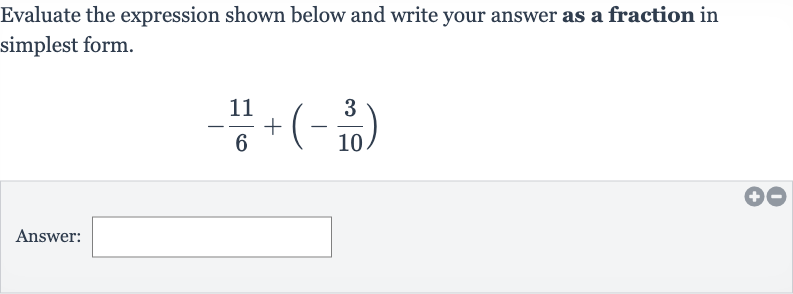AI tutor
Welcome to Bytelearn!
Let’s check out your problem:

Evaluate the expression shown below and write your answer as a fraction in simplest form.Answer:
Full solution
Q. Evaluate the expression shown below and write your answer as a fraction in simplest form.Answer:
- Identify common denominator: Identify the common denominator for the fractions.The fractions have denominators of and . The least common multiple (LCM) of and is , which will be the common denominator.
- Convert to equivalent fractions: Convert each fraction to an equivalent fraction with the common denominator of .For the first fraction, multiply both the numerator and the denominator by to get an equivalent fraction with a denominator of :For the second fraction, multiply both the numerator and the denominator by to get an equivalent fraction with a denominator of :
- Add fractions with common denominator: Add the two fractions with the common denominator.Now that both fractions have the same denominator, we can add their numerators:Combine the numerators:So the combined fraction is .
- Simplify the fraction: Simplify the fraction.The fraction can be simplified by dividing both the numerator and the denominator by their greatest common divisor (GCD). The GCD of and is .
More problems from Multiplication with rational exponents
QuestionGet tutor help
QuestionGet tutor help
QuestionGet tutor help
QuestionGet tutor help
QuestionGet tutor help
